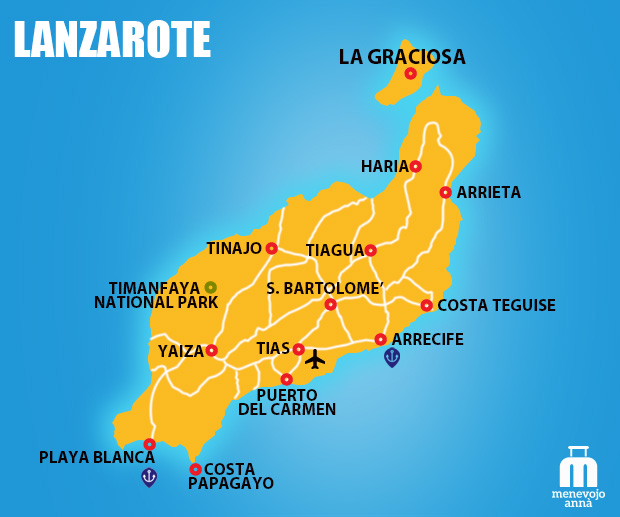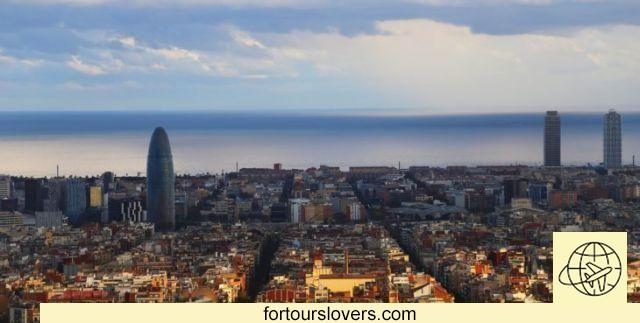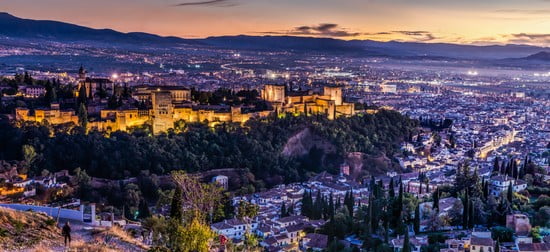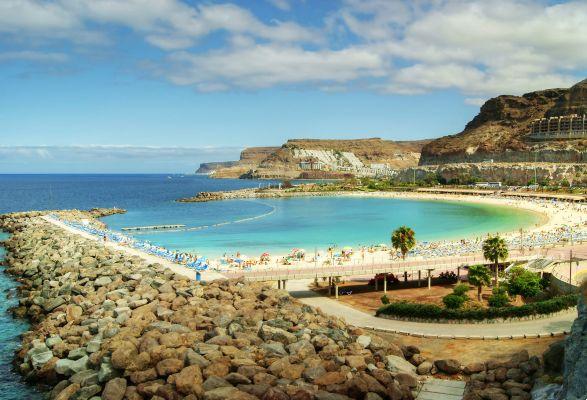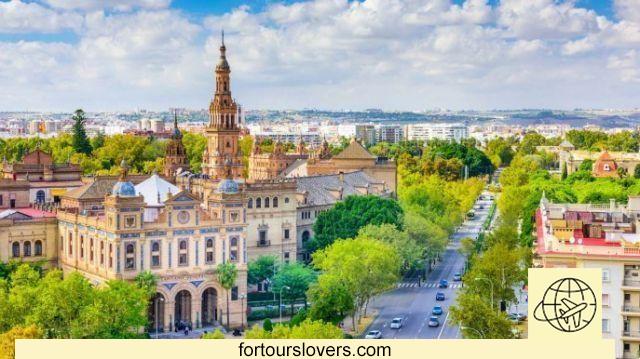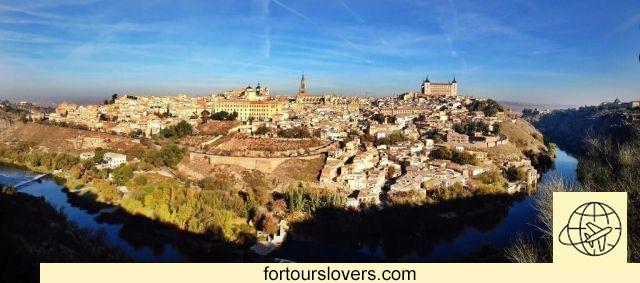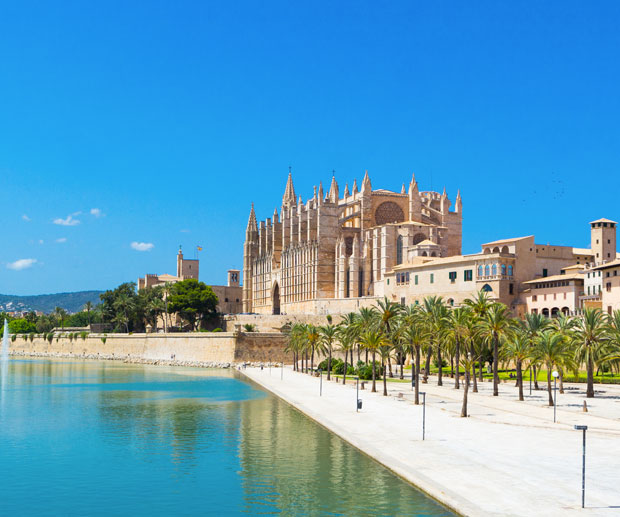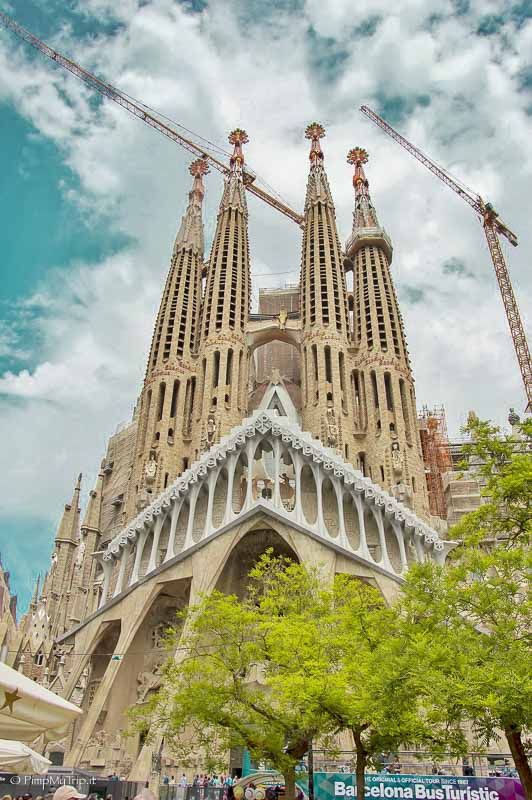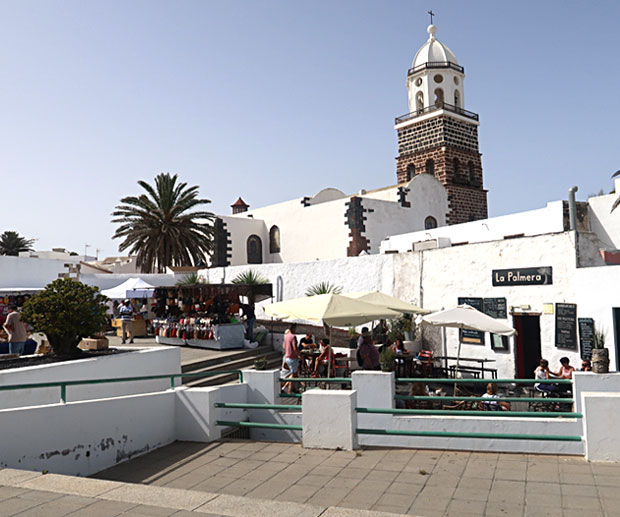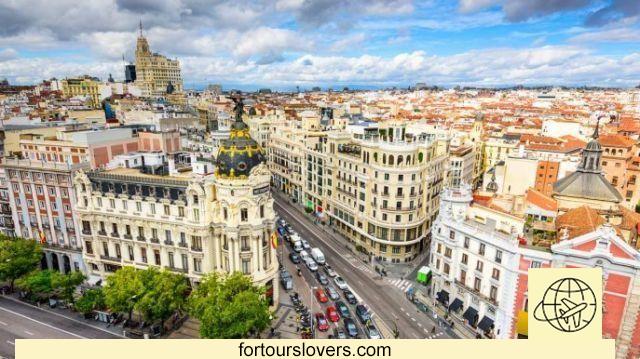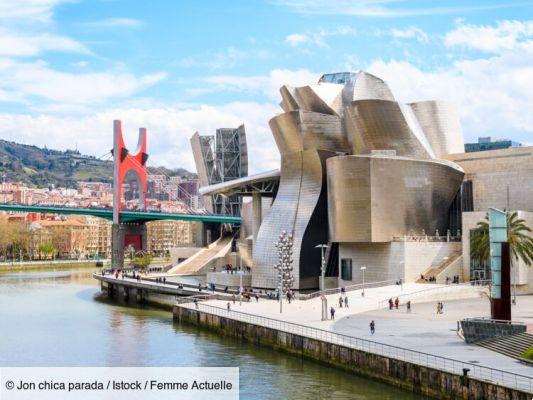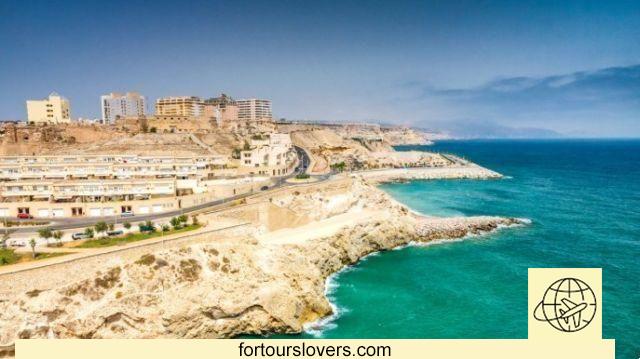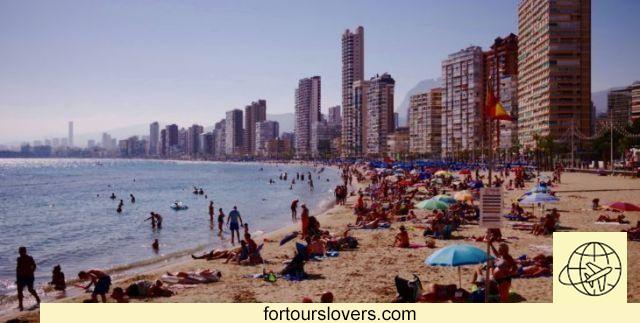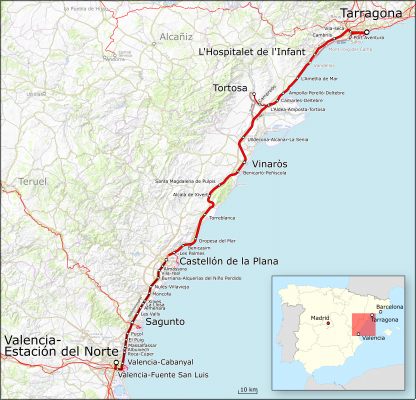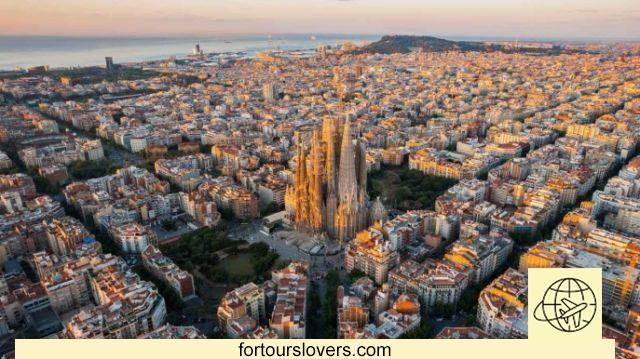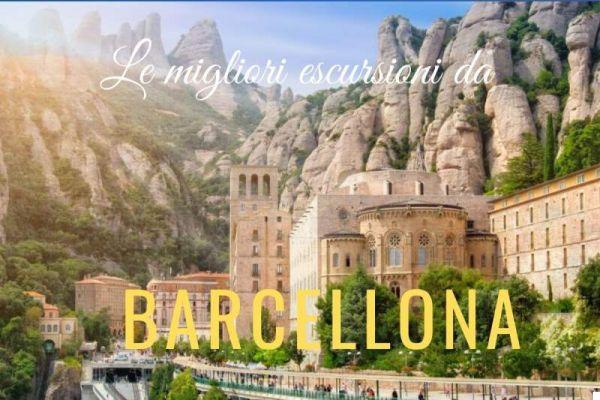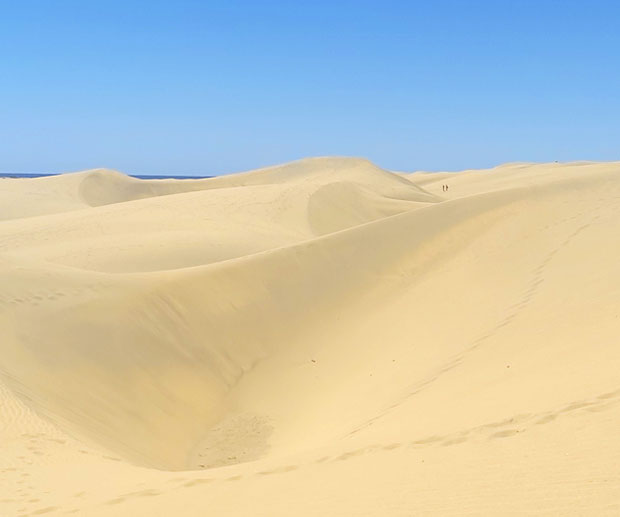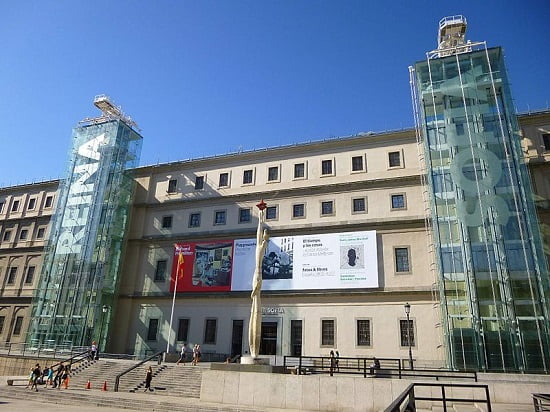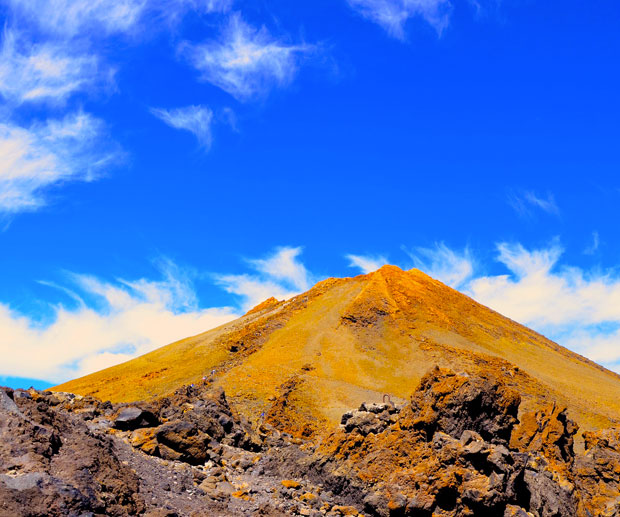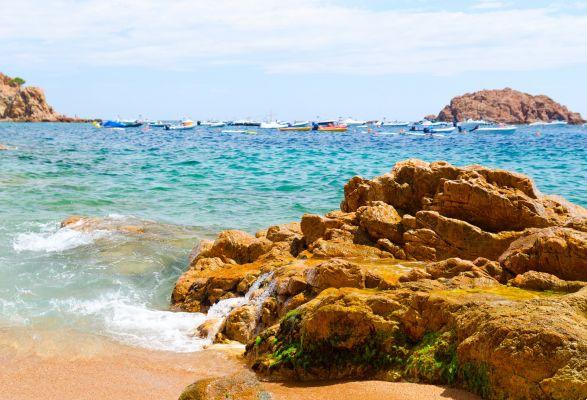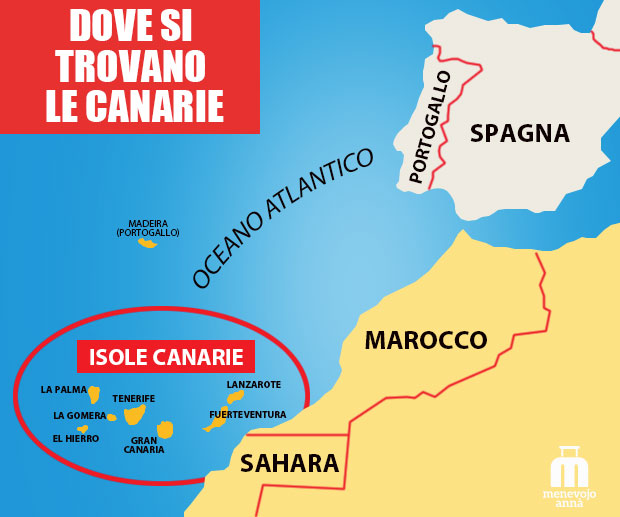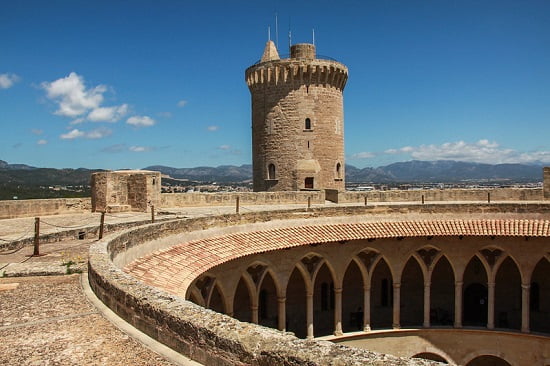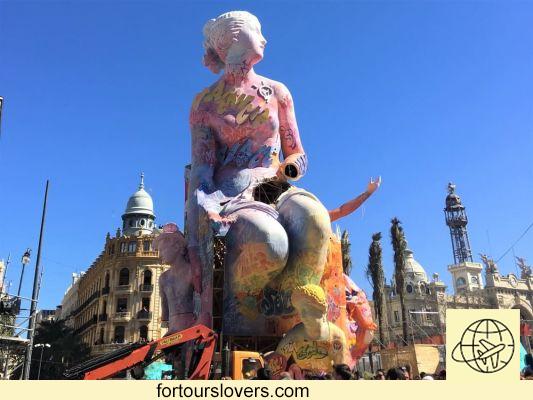
Las Fallas: the festival of Valencia
La party of Las Fallas, declared an Intangible Heritage of Humanity by UNESCO in 2016, it takes place in the capital of the Valencian Community every year from 15 to 19 March.
The origin of Las Fallas
It is a festival of ancient origins that unites the pagan tradition to that Christian. On the one hand, it celebrates the arrival of spring, on the other, San José, patron saint of carpenters and carpenters. Towards the end of the 19th century, it was precisely the carpenters who gave life to a series of rites which then evolved into today's tradition of “Las Fallas”.
Towards mid-March, in front of their shops, in the streets or in the squares, old tools, rags, junk and unused wood shavings were burned. Among these, there were also some small wooden structures called "parots". The carpenters and carpenters used them to support the oil lamps that illuminated the environment on winter nights.
After this brief explanation, you shouldn't be surprised if I told you that the etymology of the word "Fallas" comes from the Latin facula, or "torch".
Las Fallas nowadays
The term "fallas" is also used to indicate the spectacular sculptures that of wood, papier-mâché or cardboard that artists, or Falleros, they build in every district of the city and its surroundings. The dimensions of these works of art are impressive, think that some can even reach 30 meters in height! Smaller in size, but no less beautiful, are the Ninots, of the minor fallas dedicated to children.

But what what these sculptures represent?
In most cases, the figures that make up the Fallas are caricatures of political or current events, portrayed in a satirical way or in the guise of Disney protagonists.
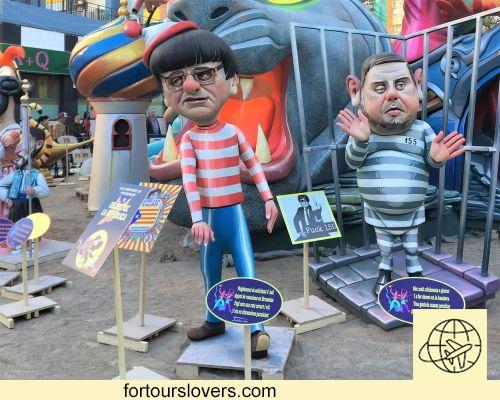
This year (2019) the center of attention was Carles Puidgemont, former leader of the Catalan independence party, targeted in all the Fallas scattered around the city.
The beginning of the Las Fallas festival
Il March 15th is the date that officially marks thestart of the party. The artists still have a few hours to devote to their sculptures which must be rigorously completed by midnight to be visible to the public in all their glory from the next day.
Kicking off the fantastic Las Fallas thinks about it the Fallera Mayor, the queen of the party, with the famous phrase: “Senyor pirótecnic pot començar la mascletà”. Elected from among several Falleras by a special commission, the Fallera Mayor remains "in office" for one year, until the next edition of Las Fallas. Do you think that the Fallera Mayor dress can cost over € 30.000 ...
The Fallera Mayor is also the last to parade in front of the Virgin in the “Ofrenda a La Virgen”. La ofrenda is a floral tribute to the Virgin of the Forsaken (in Spanish Virgen de los Desamparados) which begins on the evening of March 17th and continues uninterruptedly until March 18th.
Las Falleras and the Falleros of Valencia and neighboring villages parade, as in a pilgrimage, in the center of the city and reach the Plaza de la Virgen carrying a bouquet of flowers, usually carnations. This is the perfect opportunity to get a closer look at the beautiful Falleras dresses. Accompanied by a marching band and the Falleros parade down Calle de la Paz, Calle San Vicente to reach the Plaza de la Virgen.
You might be interested in: 8 experiences to do to discover Valencia

In the center of the piazza della Vergine, a few days earlier, a pyramid-shaped wooden structure was set up, culminating in the face of the Madonna and Child. The flowers (red, white or pink) are embedded in the wooden structure to cover it entirely and create the Virgin's mantle, creating designs and shapes that change every year.
A Valencian told me that this is it the most exciting moment in all of Las Fallas.
With the popular music played by the band, the adoring audience, the arrival at the Plaza della Virgen and the sight of the Madonna covered in flowers, it is not uncommon to see Falleras and Falleros (but also Valencians themselves or tourists around the square) being moved in front to this show.
Council: once the Ofrenda is finished, get as close to the Virgin as possible and enjoy the perfume given off by the thousands of carnations that make up her mantle.
March 19, the most exciting day
On the last day of the "Las Fallas" festival, March 19 - St. Joseph - all the wooden sculptures, both the Ninots (or Fallas Menores) and the huge Fallas Mayores, are then burned in the famous night "de la Cremà".
At 22: 00 the Ninots are set on fire, while at midnight, it's the Fallas Mayores. The last Fallero monument to be burned is the one located in the Plaza del Ayuntamiento. It is a pity that these works of art, created thanks to hundreds of people who work on them for about a year, are destroyed like this and that they vanish in smoke and ashes in a few minutes. Actually, there are only two fallas that are "spared" from this cruel end. A Falla Menor and a Falla Mayor they are in fact declared winners by a special commission that displays and votes them during the holiday week. Both are therefore not burned. They are then transferred to the Fallero Museum which is located a short distance from the splendid Ciudad de las Artes y Ciencias.

What is the Mascletà?
A few lines ago, I talked about Mascletà. Are you wondering what it is ?!
La Mascletà is a deafening sound show (think that you can reach 120 decibels!) created by the explosion of thousands of powerful firecrackers that takes place every day, from 15 to 19 March at 2 pm in the suggestive Ayuntamiento square.
The show lasts about ten minutes and attracts many tourists, but also Valencians themselves. The luckiest (and wealthiest) have a view directly on the square, because they stay in the surrounding hotels or take advantage of the office where they work to invite friends and relatives to see the Mascletà from a more privileged position. All the others, however, already two hours before the show, pour into the square with cans of beer, chips and pipas to pass the wait.
How does the Mascletà take place?
At 13:50 o'clock, a very powerful firecracker is fired into the air, followed by another at 13:55. So here people stand up, start whistling, shouting, picking up mobile phones to take photos and videos: the show is about to begin!
It is really difficult to describe in words what it feels like when you see it, but above all, you are witnessing a Mascletà (let alone if you participate in all 5 Mascletà in the week of Las Fallas). The "shots" of the firecrackers gradually increase the pace until the final "earthquake". A gray smoke rises in the air that obscures the sun, as well as a truly deafening noise and the smell of gunpowder which, at times, becomes almost unbreathable.
A little tip: if loud noises bother you, stay near the fountain in the square. If you are more daring, approach the building of the Municipality and ... well, good luck to your eardrums!
The Mascletà ends with a final single firecracker burst, followed by the shouts and applause of the public who, slowly, leave the square and pour into the bars of the city to eat, but above all to enjoy a (or more) delicious fresh cervecita.
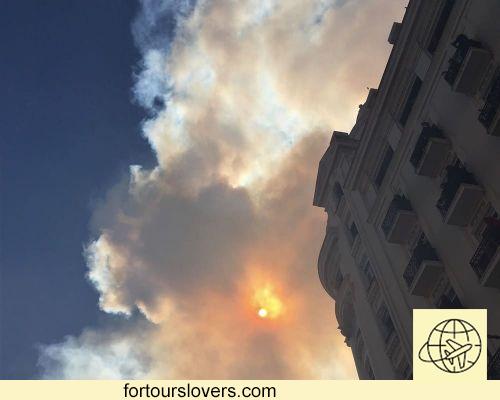
Las Fallas: the evening celebrations
Different from the Mascletà are the night fireworks. This is because the Mascletà is purely a spectacle during the day that produces noise, while at night the city lights up with the most beautiful fireworks I have ever seen.
The most emblematic fireworks display, without a doubt, is that of the night of March 18th (or morning of 19th, since it starts at 1:30 am). This is the Nit del Foc which marks the beginning of the last day of the Las Fallas festival.
Personally I was lucky enough to meet two Valencian guys who kindly invited me to see the Nit del Foc from the terrace of their house. I was not far from the Puente de Aragón, the place from which fireworks are fired. While, incredulous, I stared at the amount of explosives ready to amaze the hundreds of tourists gathered around Paseo del Alameda, my new friends explained to me that this year (2019) the show would be directed by Ricardo Caballer, one of the most internationally famous.
Again, guys, it's hard to put into words what I witnessed. It is enough for me to tell you that for the show, operated and digitally controlled through 12 computers, they took over 3000 kg of explosives. In addition to the explosives, there was a 60-meter-high crane with a 48-meter horizontal boom. From there were fires at 360 degrees, 30 different visual effects, 3 minutes of final "earthquake", for a total of about 22 minutes of show.
One word: single!
Caution: the locations of the night fireworks change. The first night I witnessed a fireworks show in the Plaza del Ayuntamiento. On the second and third night, however, fires were fired in the Alameda area.
Once the fireworks are over, the party for the las fallas does not end, quite the contrary. All Valencians and tourists stay in the streets of the city and enjoy reggaeton and, as always, cervecita in the many verbenas found in every barrio of Valencia.
You may be wondering what the verbenas? They are simply "discos" that are set up in the streets of the city. A small stage, a deejay or a musical group and off to the dances! There really is something for all musical tastes!
Practical tips to enjoy Las Fallas to the fullest
Las Fallas is one of the best known events not only throughout Spain, but also internationally. Imagine how many people flock to Valencia from 15 to 19 March ...
So book your accommodation (hotel, AirBnb or hostel) and your tickets (train or plane) well in advance. Prices, needless to say, skyrocket. For the occasion, those who have a free room or bed in their home rent it out and make it available to tourists. The hostel or bed are the two least expensive options.
I stayed in the hostel The River Hostel (click to enter) . Clean, relatively cheap, but above all in a very central position (Plaza del Ayuntamiento is in fact only a 7 minute walk away!).





